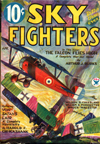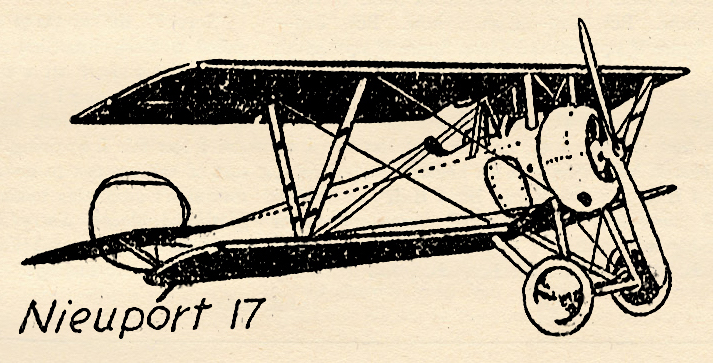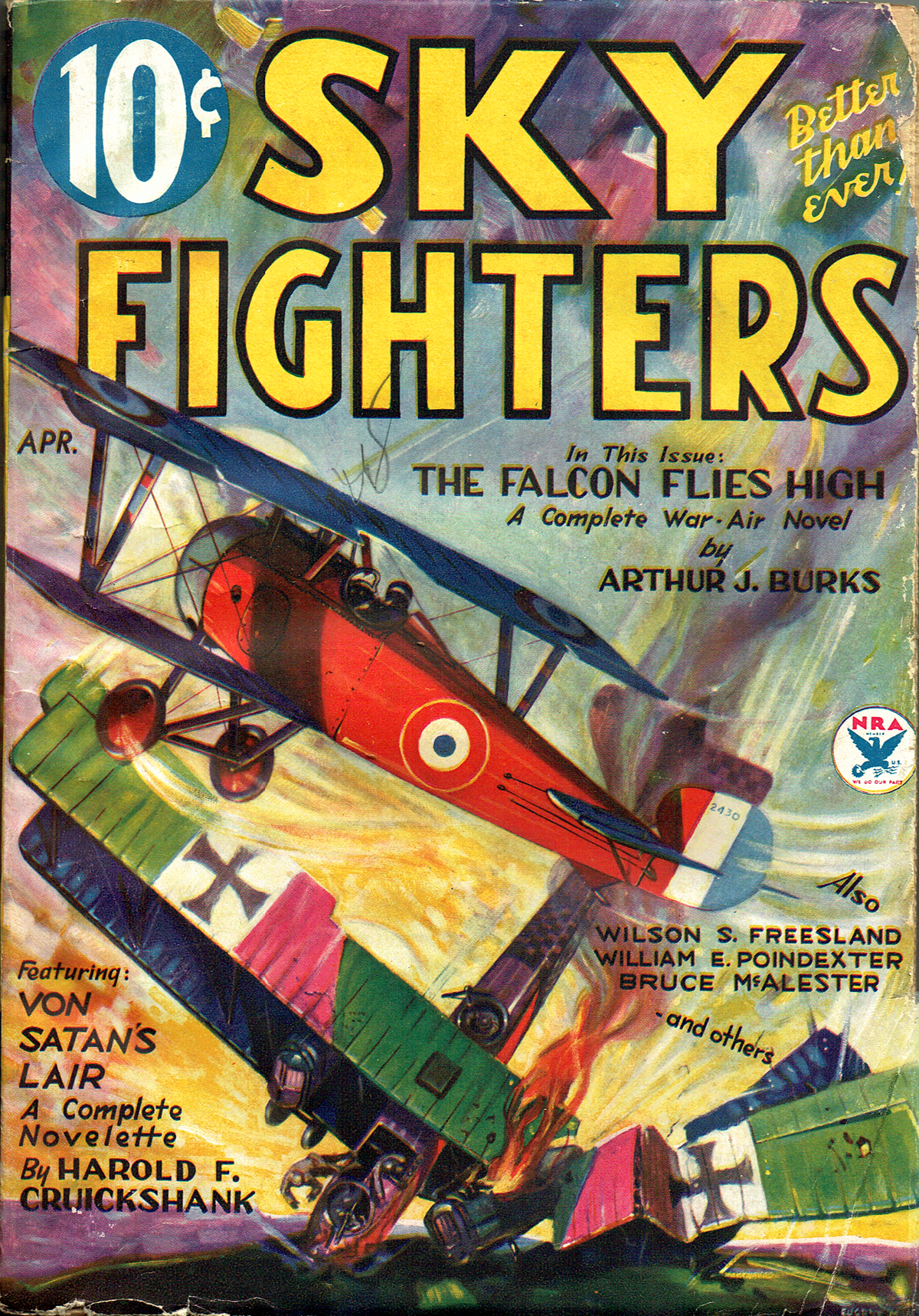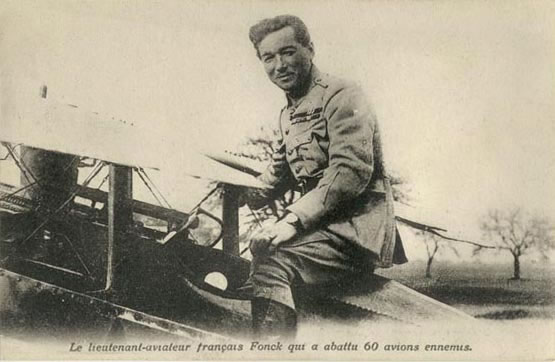Amidst all the great pulp thrills and features in Sky Fighters, they ran a true story feature collected by Ace Williams wherein famous War Aces would tell actual true accounts of thrilling moments in their fighting lives! This time it’s France’s Lieutenant Roland Garros’ Most Thrilling Sky Fight!
Roland Garros was 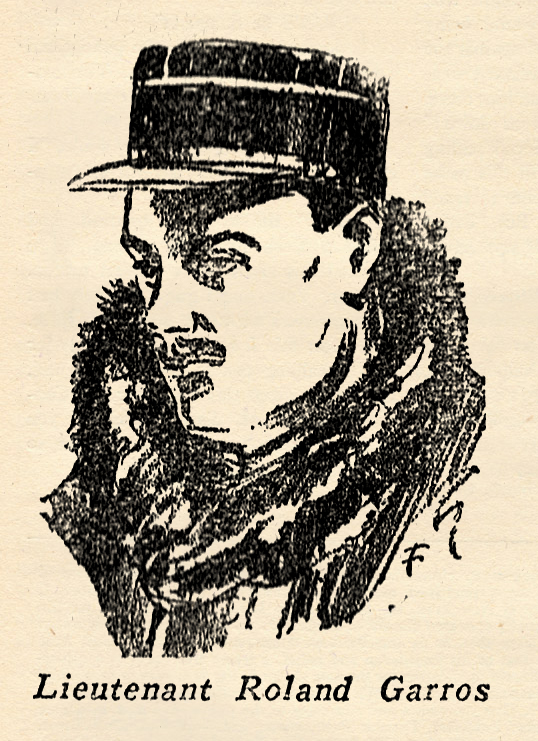 one of the world’s foremost airmen before the World War began. When the French army was mobilized, Garros joined his squadron, the Morane-Saulnier 23, just as it was leaving for the front. He built up a wonderful record for himself in respect to scouting.
one of the world’s foremost airmen before the World War began. When the French army was mobilized, Garros joined his squadron, the Morane-Saulnier 23, just as it was leaving for the front. He built up a wonderful record for himself in respect to scouting.
Garros was an inventor as well as an aviator, and from the beginning of the war he set about improving the airplane as a fighting machine. On February 5th, 1915, he mounted a machine-gun on his airplane in such a manner that it fired through the whirring blades of the propeller, and thus changed the whole course of aerial warfare. His gun was not arranged to fire in synchronism with the propeller, so to save it from being shot through with holes, he armored it with steel tips. The bullets hitting it would thus be deflected harmlessly.
Improvements came later, but Garros, with his crude invention, shot down the first enemy airplane to be winged from the air. And from February 5th to April 19th, 1915, he succeeded in shooting down four others, becoming the first flying Ace.
The Germans learned his secret and equipped their planes in the same manner as his.
The account below is taken from an interview he gave the day after he shot down his first victim.
WINGS OF DEATH
by Lieutenant Roland Garros • Sky Fighters, March 1934
NATURALLY, the question in my mind was whether it would work in the air or not. I had tried it on the ground, and the gun functioned perfectly. I was able to hit a small target at a range of 100 meters. That success made me anxious to take off immediately. But mon commandant, Capitaine de Beauchamp, restrained me until the next morning.
Then he patted me on the shoulder and smiled: “Come back, mon enfant and tell the rest of us how it worked.” I waved and shot down the field, taking off lightly as a feather, despite the added weight of machine-gun and ammunition.
I flew towards Germany, until I came to a German drome. Three ships were on the ground getting ready to take off. I slanted off when I saw them, knowing that they saw me. too. But I wanted them to come up and fly after me.
I would let them chase me until they got close, then I would turn suddenly and fire on the leader.
I knew I could duck their bombs and rifle fire, then would come the surprise. All three Taubes came up and started in my direction. I slowed down. They circled trying to herd me back towards my own trenches. I let them get closer. The leading Taube was less than a hundred meters behind. “Now is the time!” I said, and threw my little ship around swiftly. The German darted past. I had banked so swiftly he couldn’t follow. I banked again, lowered my nose, until it sighted right on the German pilot’s back. I pressed the gun trigger.
Clackety-clack—clack-clack!
The gun stuttered, shook. The bullets spewed out. Linen stripped from the Taube, blasting back in the wind stream. I moved my controls slightly, pulled the trigger again. The pilot wilted. The Taube went up on one wing, began slipping sideways. Then it nose-dived and plunged into the ground.
I wheeled then to attack the others. But one had been forced down with motor trouble. The other was running away towards his own drome. I chased him clear to the ground, and fired my last rounds as it landed. I had no more bullets, so rushed home to make my report to Captain de Beauchamp. I was breathless! My invention had worked in the air!
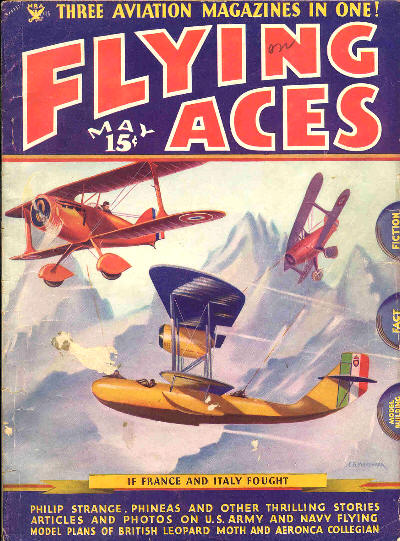 You heard right! That marvel from Boonetown, Iowa is back with a tale of starry-eyed colonels with visions of Hollywood and hidden german gun placements. Can that Knight of Calamity manage to find the Boche’s long-range guns while placating a colonel who thinks he’s the next Cecil B. DeMille all while avoiding landing in a dank cell in Blois? Find out in “Cinema Bums” from the pages of the May 1935 Flying Aces.
You heard right! That marvel from Boonetown, Iowa is back with a tale of starry-eyed colonels with visions of Hollywood and hidden german gun placements. Can that Knight of Calamity manage to find the Boche’s long-range guns while placating a colonel who thinks he’s the next Cecil B. DeMille all while avoiding landing in a dank cell in Blois? Find out in “Cinema Bums” from the pages of the May 1935 Flying Aces.




 one of the world’s foremost airmen before the World War began. When the French army was mobilized, Garros joined his squadron, the Morane-Saulnier 23, just as it was leaving for the front. He built up a wonderful record for himself in respect to scouting.
one of the world’s foremost airmen before the World War began. When the French army was mobilized, Garros joined his squadron, the Morane-Saulnier 23, just as it was leaving for the front. He built up a wonderful record for himself in respect to scouting.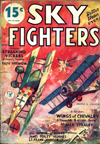

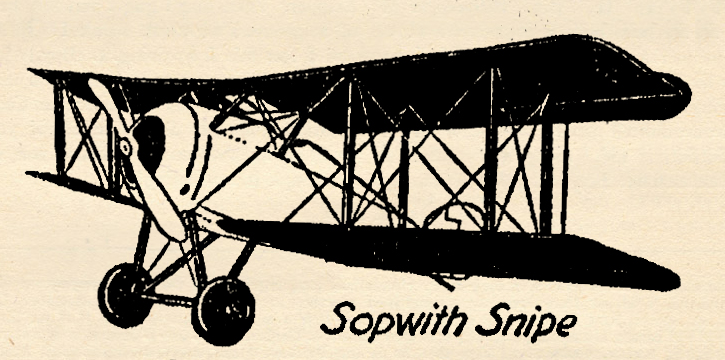
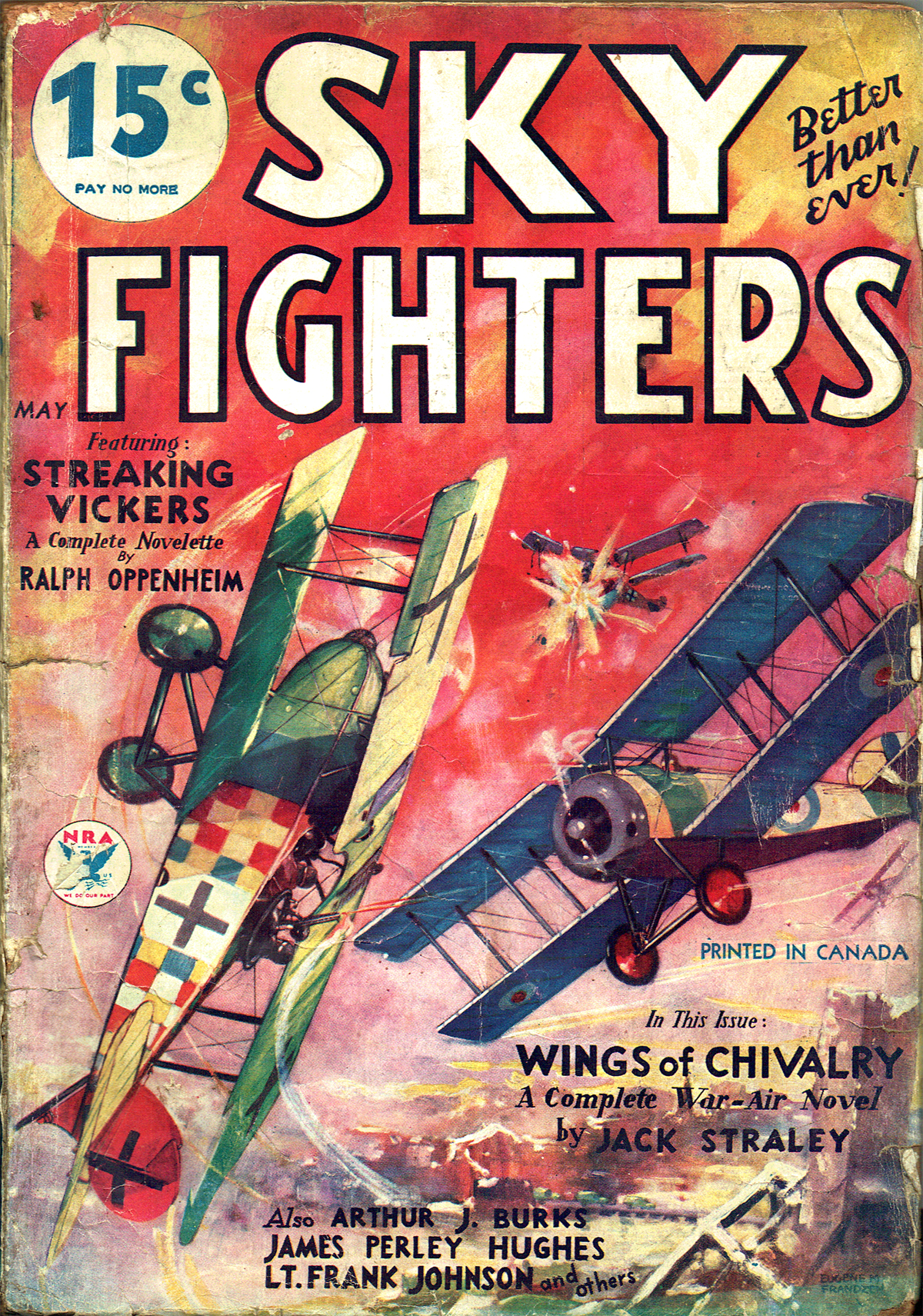
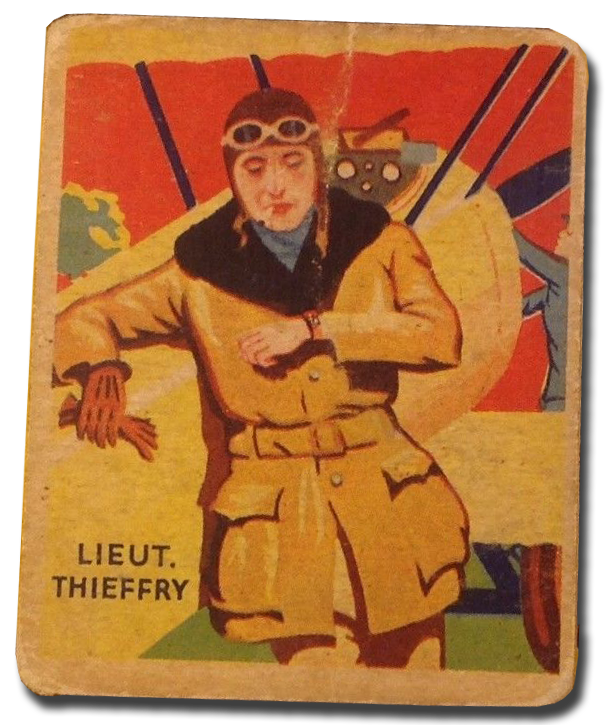 issue of Flying Aces and running almost 4 years,
issue of Flying Aces and running almost 4 years, 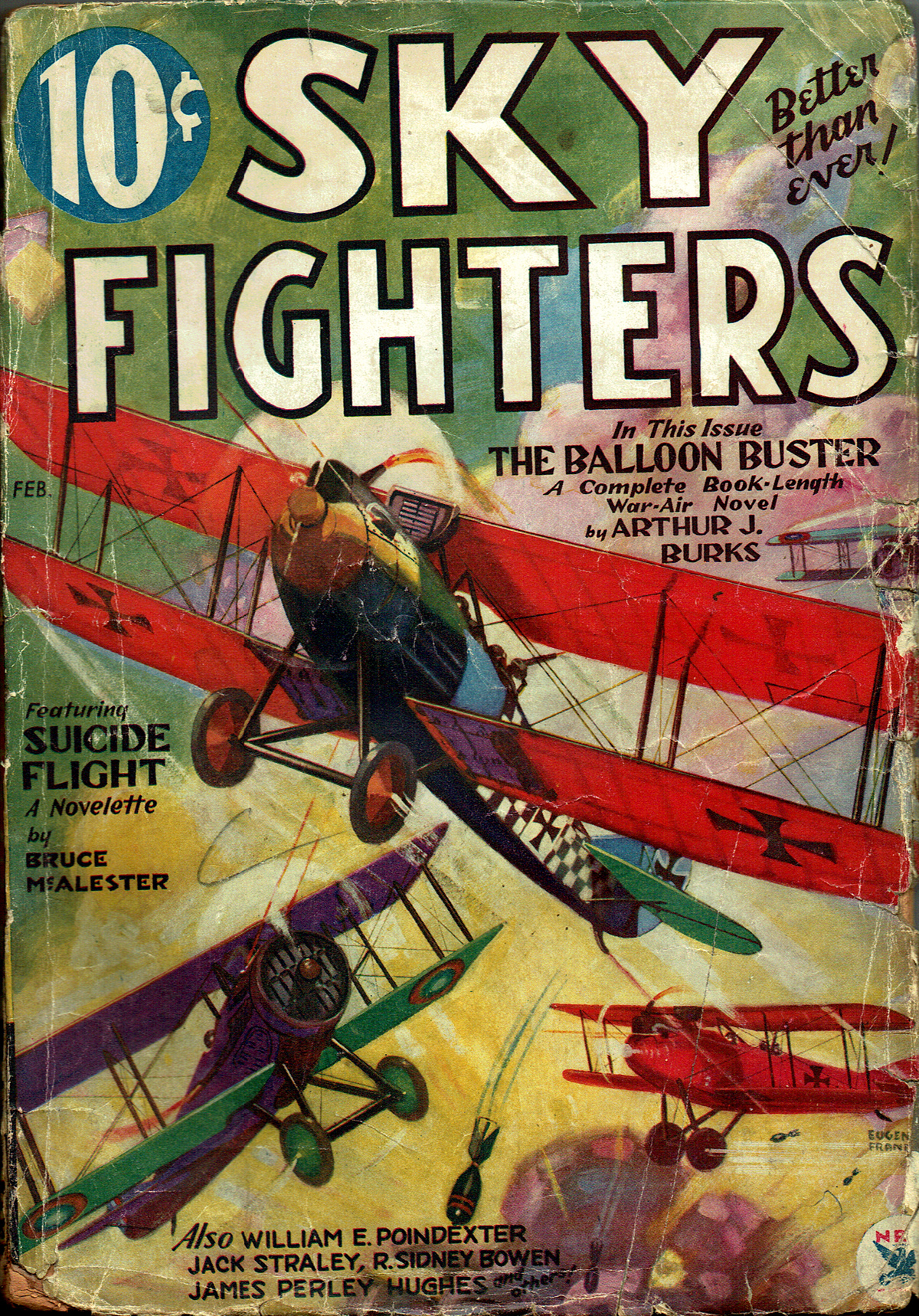 we have a tale from the anonymous pen of Lt. Frank Johnson—a house pseudonym. Sky Fighters ran a series of stories by Johnson featuring a pilot who who was God’s gift to the Ninth Pursuit Fighter Squadron and although he says he’s a doer and not a talker, he wasn’t to shy to tell them all about it. Which earned him the nickname “Silent” Orth.
we have a tale from the anonymous pen of Lt. Frank Johnson—a house pseudonym. Sky Fighters ran a series of stories by Johnson featuring a pilot who who was God’s gift to the Ninth Pursuit Fighter Squadron and although he says he’s a doer and not a talker, he wasn’t to shy to tell them all about it. Which earned him the nickname “Silent” Orth. 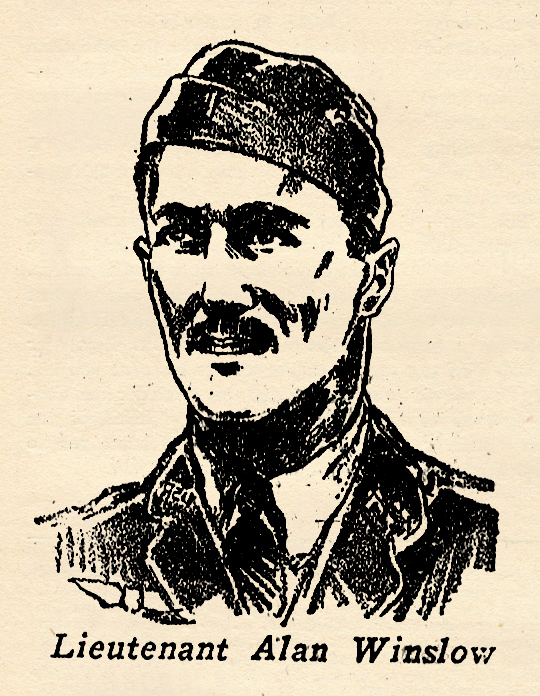 went oyer to France as a member of tho American Ambulance Section serving with the French Army. After America entered the war he was transferred to the American Army. When the American Air Service under command of Colonel Mitchell began definite duties on the Western Front, Alan Winslow had won his commission as a First Lieutenant and was assigned as a pilot in the 94th Aero Squadron, the famous “Hat in the Ring” outfit later made famous by Captain Eddie Rickenbacker.
went oyer to France as a member of tho American Ambulance Section serving with the French Army. After America entered the war he was transferred to the American Army. When the American Air Service under command of Colonel Mitchell began definite duties on the Western Front, Alan Winslow had won his commission as a First Lieutenant and was assigned as a pilot in the 94th Aero Squadron, the famous “Hat in the Ring” outfit later made famous by Captain Eddie Rickenbacker.